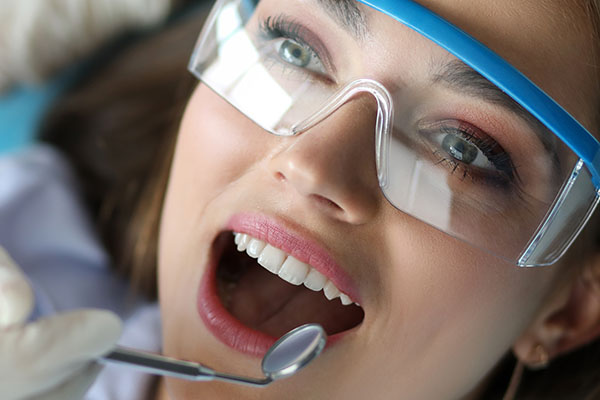 Invisalign® is probably the most well-known brand name for clear aligners. Their popularity is due to their ability to straighten teeth flexibly and discreetly and to their SmartTrack™ material, which can move teeth comfortably and accurately. Patients interested in Invisalign need to consider the benefits and if they are candidates.
Invisalign® is probably the most well-known brand name for clear aligners. Their popularity is due to their ability to straighten teeth flexibly and discreetly and to their SmartTrack™ material, which can move teeth comfortably and accurately. Patients interested in Invisalign need to consider the benefits and if they are candidates.
Invisalign clear aligners
Invisalign is a highly recognizable brand of clear aligners. These orthodontic appliances straighten teeth through a series of clear and custom-fit trays. Every few weeks, the patient receives a new set of clear aligners that slowly move teeth toward the desired position.
Benefits of Invisalign
Invisalign appeals to those who want a straighter smile but do not like the idea of having to wear noticeable braces for months or years. Clear aligners provide a more discreet and flexible way to straighten teeth, as they are nearly invisible when worn. Also, the aligners are removable, which makes eating and cleaning easier. In addition, Invisalign consists of a material known as SmartTrack, a high-quality and multi-layered plastic designed to straighten teeth more effectively and predictably.
Who is a candidate?
Despite these benefits, one must be a good candidate for Invisalign to work for them. Clear aligners may not be a good match for those with complicated cases or those who may have trouble with treatment compliance. Here is what a person considering clear aligners needs to know.
Age range
Most adults and some teens are good candidates for Invisalign. However, clear aligners are seldom recommended for children, especially young ones. Young children are more likely to take their aligners out, lose them, or forget to put them back in. For this reason, braces are typically a better solution for children.
Personality & habbits
Clear aligners require a high level of compliance. Patients need to wear them for at least 22 hours a day. If a patient wears them for less, the aligners lose some of their effectiveness, making the treatment take longer. Proper care, including cleaning and storing the aligners in their box while not in use, is also important. Therefore, organized individuals who can follow directions properly are the best candidates for clear aligner treatment.
Nature of orthodontic issue
A key consideration with Invisalign is the type of malocclusion or alignment issue the patient is trying to treat. Clear aligners are typically best suited to mild to moderate tooth alignment and bite issues. Braces are still better for more complicated cases. Also, some patients have teeth that are not well shaped for Invisalign. In addition, Invisalign cannot raise or lower the position of teeth in the Jawbone or correct teeth that are too far apart or rotated.
Is Invisalign for you?
The best way to find out if Invisalign treatment is a good match for you is to schedule a consultation. Our team can evaluate your case and advise you on the appropriate treatment. Call us today to learn more about the benefits of Invisalign and find out if you are a candidate.
Request an appointment or call Sand Hill Dental, LLC at 908-968-9075 for an appointment in our Flemington office.
Related Posts
Invisalign® is one of the most revolutionary orthodontic treatments available. This option serves as a clear, discreet way to correct dental misalignments. Invisalign aligners are customized to fit the teeth and are a lot less intrusive compared to conventional braces. The subtlety and convenience of Invisalign have made it a popular choice, particularly for adults…
Invisalign® is a modern teeth-straightening treatment that changes dental alignment by moving teeth with clear aligners. The process of getting this system is like that of getting traditional braces. Each step makes sure that you achieve a straighter, healthier smile. Here are the different parts of your Invisalign journey.This is the first step of getting…
Curious about Invisalign®? Read on to learn more. It takes more than just wearing Invisalign® aligners to get the job done. The process entails a series of steps aimed at maximizing the effectiveness of the treatment and protecting the overall health of your teeth.One of the reasons many people opt for Invisalign is the ability…
